Whether or not you exercise, hip mobility plays a factor in your everyday life. Within the exercise realm, good hip mobility can be the difference between being “in the game” and just watching from the sidelines. In day-to-day life, hip mobility factors into nearly all movements, including climbing stairs, sitting and standing, and walking. If you find yourself wondering whether you could benefit from improved hip mobility, the answer is a resounding “Yes”! While understanding the importance of hip mobility is key, designing a routine that is appropriate for your needs and goals takes precedence.
Benefits of Improved Hip Mobility
If I were to pinpoint a few benefits of improved hip mobility, I would first look at the basic elements and emphasize the benefits of improved balance. Although you do not stand on one foot on a regular basis, you do, however, get in and out of your car, which requires a degree of balance. As hip mobility deteriorates, you may find it harder and harder to get out of your car.
A second area to look at is hip-strength imbalances in the body. This can become a more advanced quickly, so lack of hip mobility can lead to an abnormal strain on other muscle groups. An example of this is that an individual who sits all day may develop weak hip muscles (like the psoas, iliacus, and rectus femoris), which in turn could lead to the hamstring getting overworked.
Lastly better hip mobility can lead to fewer injuries and decreased overall pain due to hip tightness. Those who are running a marathon might discover tightness in their hips that could be remedied through a well-thought-out hip-mobility warmup.
Improving Your Hip-Mobility Warmups
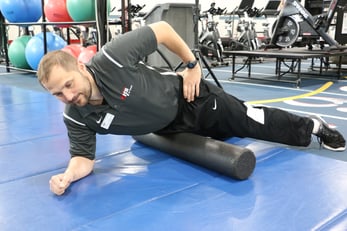 Most workout formulas include a warmup process. If hip mobility is a focus, your workout would benefit from a few additions to the routine. Foam rolling, which has been around for a while, is a great way to get blood circulating to the muscles and decrease soreness (if you worked them out prior). Spending a few minutes to roll out the trigger spots (areas of higher tenderness) will help you feel better, and you will be able to exercise on a more consistent basis.
Most workout formulas include a warmup process. If hip mobility is a focus, your workout would benefit from a few additions to the routine. Foam rolling, which has been around for a while, is a great way to get blood circulating to the muscles and decrease soreness (if you worked them out prior). Spending a few minutes to roll out the trigger spots (areas of higher tenderness) will help you feel better, and you will be able to exercise on a more consistent basis.
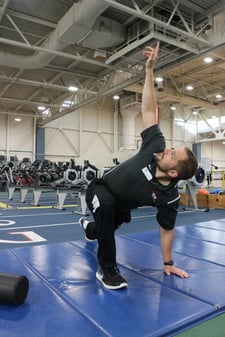 Second, I would suggest a dynamic movement stretch (rather than traditional static stretching) to help not only stretch the muscle, but also warm up the body for more movement. “The World’s Greatest Stretch” (yes, that’s really its name) takes the exerciser into a lunge position, rotating and opening up the torso to the ceiling. Why is this called the “World’s Greatest Stretch?” For starters, you are able to stretch not only your hip flexors, but also your hamstrings and torso. As you do the stretch, both sides back to back, you notice that the stretch allows you to flow, dynamically, which is a great way to get your body ready for movement.
Second, I would suggest a dynamic movement stretch (rather than traditional static stretching) to help not only stretch the muscle, but also warm up the body for more movement. “The World’s Greatest Stretch” (yes, that’s really its name) takes the exerciser into a lunge position, rotating and opening up the torso to the ceiling. Why is this called the “World’s Greatest Stretch?” For starters, you are able to stretch not only your hip flexors, but also your hamstrings and torso. As you do the stretch, both sides back to back, you notice that the stretch allows you to flow, dynamically, which is a great way to get your body ready for movement.
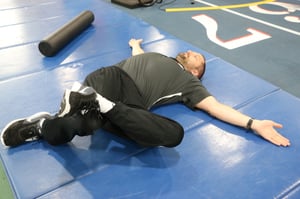 Finally, another great stretch to do is simply called a Hip Internal Rotation Stretch. While lying on your back, cross one leg over the other, allowing the hips to lean to one side and getting a decent stretch.
Finally, another great stretch to do is simply called a Hip Internal Rotation Stretch. While lying on your back, cross one leg over the other, allowing the hips to lean to one side and getting a decent stretch.
Address Your Hip Problems Now
Some hip problems are not from a lack of trying. Physiologically, there are many reasons your hips might hurt. If you feel as though you are having excessive pain in your hips, you might need to consult with someone who can help you. Overall balance issues, unnecessary pain, and muscle imbalances can all become bigger, life-altering issues down the road, so take care of them before they become bigger issues.
We want you to feel good! Come see a NIFS staff member at the track desk to schedule a complimentary FMS Screen to determine ways we can best help you with your exercises. Remember to warm up properly and stretch when appropriate, strengthen your weaknesses to see real improvement, and consult a professional to help you develop your plan.
This blog was written by Thomas Livengood, NIFS Health Fitness Instructor and Personal Trainer. To read more about the other NIFS bloggers, click here.


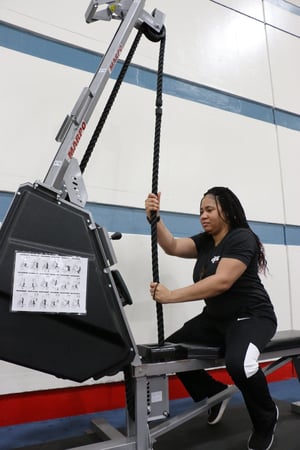 Ergometers have been a mainstay in the fitness world for a long time. You might not realize it, but many of the cardio pieces in your fitness center that you use regularly are ergometers. The arm ergometer comes from two Greek words: ergo, which means work, and metro or meter, which means measurement. In essence, any cardio equipment you have been using that has the capability to measure your workload can be considered an ergometer.
Ergometers have been a mainstay in the fitness world for a long time. You might not realize it, but many of the cardio pieces in your fitness center that you use regularly are ergometers. The arm ergometer comes from two Greek words: ergo, which means work, and metro or meter, which means measurement. In essence, any cardio equipment you have been using that has the capability to measure your workload can be considered an ergometer.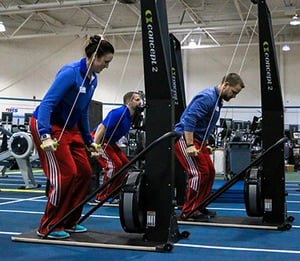 Another piece of UBE equipment you can find is the
Another piece of UBE equipment you can find is the 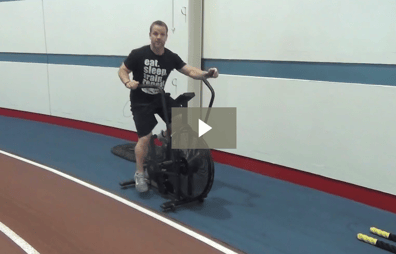
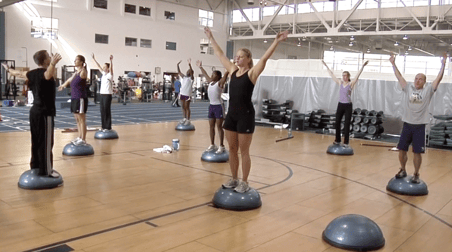 Imagine a tightrope walker, gracefully walking their path across their suspended highwire. An incredible amount of balance is required, along with stability and strength, to ensure that the performer maintains their position on the rope. Now think about balance as it applies to you and your profession or daily life. You might not even think about it, but you use balance every day. Things that you take for granted, such as walking down stairs, putting on a pair of pants, and getting out of your car require some level of balance, or else we would most likely take a tumble. Thankfully, there are exercises and routines designed to improve and train balance that transfer nicely to daily life.
Imagine a tightrope walker, gracefully walking their path across their suspended highwire. An incredible amount of balance is required, along with stability and strength, to ensure that the performer maintains their position on the rope. Now think about balance as it applies to you and your profession or daily life. You might not even think about it, but you use balance every day. Things that you take for granted, such as walking down stairs, putting on a pair of pants, and getting out of your car require some level of balance, or else we would most likely take a tumble. Thankfully, there are exercises and routines designed to improve and train balance that transfer nicely to daily life.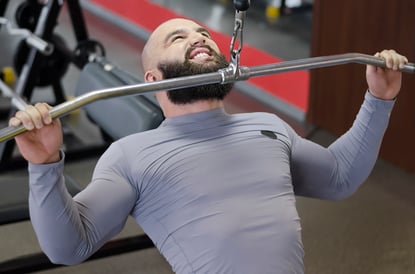 Have you ever tried working out in a time crunch or just wanted to get more exercise in a shorter period of time? Maybe you would like to speed through, but would rather have a plan of action to make your path a little easier. You are in luck because there is a fitness concept that does all of this while making sure you get a great workout. The idea is called supersetting, but it’s not as simple as you might think. To develop a great superset workout, you need to understand how a few concepts really work.
Have you ever tried working out in a time crunch or just wanted to get more exercise in a shorter period of time? Maybe you would like to speed through, but would rather have a plan of action to make your path a little easier. You are in luck because there is a fitness concept that does all of this while making sure you get a great workout. The idea is called supersetting, but it’s not as simple as you might think. To develop a great superset workout, you need to understand how a few concepts really work.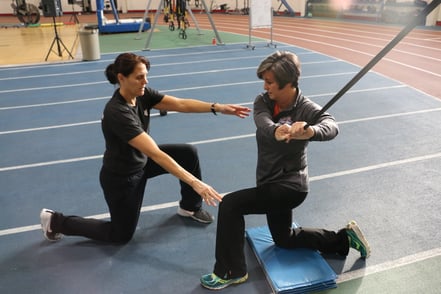 Coaching cues can really make a big difference in the outcome of your workouts. Sometimes it means the difference in whether you get injured during an exercise. Or are you even working the muscles you originally intended to use? Without cues, it would be foolish to have a client jeopardize their health because they saw someone else do a movement incorrectly or think they read it in a magazine or online. This is not to say that there are not many ways one can do to their exercises, or modifications to spice up their workout plan, but you need to make sure you aren’t compromising yourself and goals in the process.
Coaching cues can really make a big difference in the outcome of your workouts. Sometimes it means the difference in whether you get injured during an exercise. Or are you even working the muscles you originally intended to use? Without cues, it would be foolish to have a client jeopardize their health because they saw someone else do a movement incorrectly or think they read it in a magazine or online. This is not to say that there are not many ways one can do to their exercises, or modifications to spice up their workout plan, but you need to make sure you aren’t compromising yourself and goals in the process.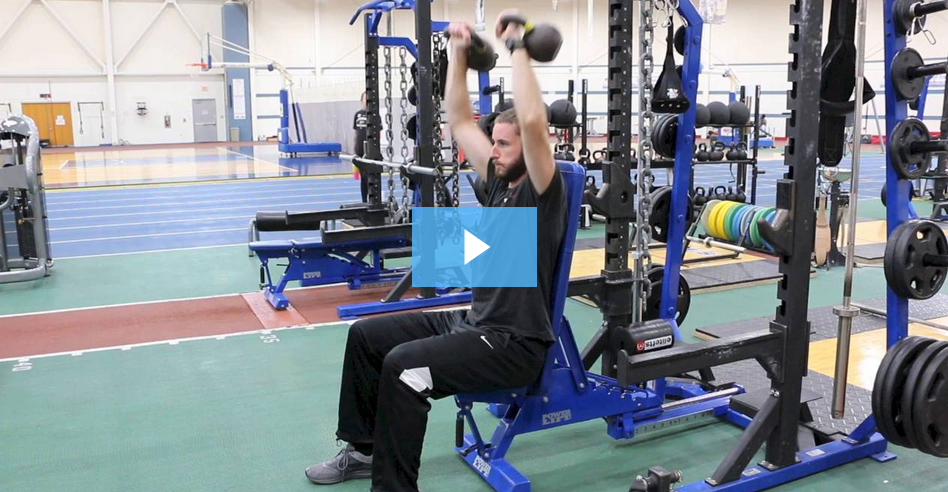
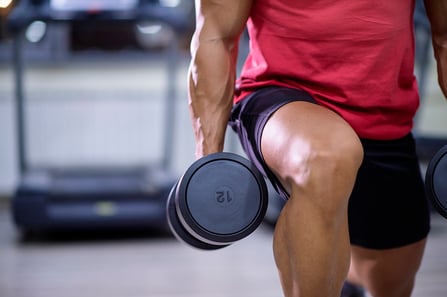 For some people, leg day at the gym is the greatest single day of the week. For others, however, there couldn’t be a more grueling and loathsome experience. We all know that leg workouts are essential to our total-body fitness plans and that there are consequences to not doing leg day, like becoming internet memes.
For some people, leg day at the gym is the greatest single day of the week. For others, however, there couldn’t be a more grueling and loathsome experience. We all know that leg workouts are essential to our total-body fitness plans and that there are consequences to not doing leg day, like becoming internet memes.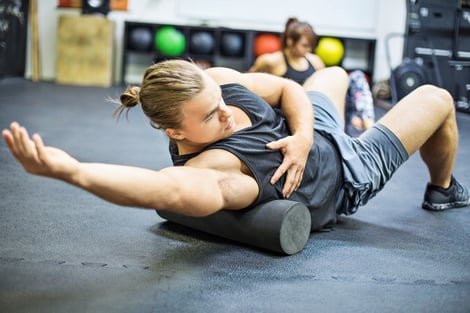 For the majority of my athletic and fitness career, getting sore from activities, workouts, practices, or games has not only been a sign that work has been done, but also a rite of passage. The saying, “no pain, no gain” came about as a result, and the world would judge successful workouts on soreness.
For the majority of my athletic and fitness career, getting sore from activities, workouts, practices, or games has not only been a sign that work has been done, but also a rite of passage. The saying, “no pain, no gain” came about as a result, and the world would judge successful workouts on soreness.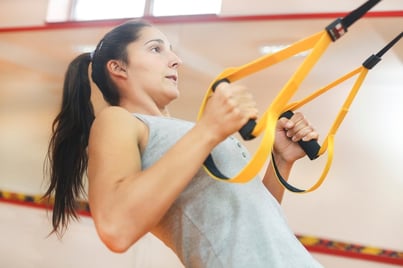 Have you tried TRX class at NIFS? For starters, you may be asking yourself, “What is a trx?” TRX is a body-weight suspension training system designed to give you a total-body workout, while playing to your skill set and allowing for nearly limitless body-weight–oriented exercise. TRX can provide a fitness beginner with an opportunity to learn movement patterns properly as well as challenge the most seasoned veterans in the gym with more advanced progressions.
Have you tried TRX class at NIFS? For starters, you may be asking yourself, “What is a trx?” TRX is a body-weight suspension training system designed to give you a total-body workout, while playing to your skill set and allowing for nearly limitless body-weight–oriented exercise. TRX can provide a fitness beginner with an opportunity to learn movement patterns properly as well as challenge the most seasoned veterans in the gym with more advanced progressions.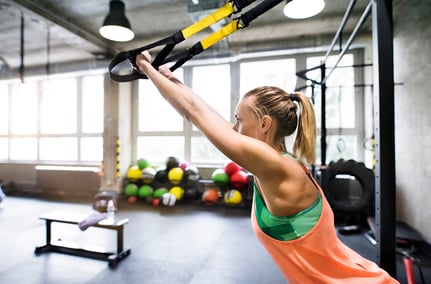 TRX Row: With two handles set to the short length (one tick mark), start with arms long and body in a plank position, being mindful that you do not let your hips sag. While under control, pull yourself up to your hands. Lower back down under control. PRO TIP: You can pull with your hands parallel to the floor to engage the lats more, whereas pulling with your hands horizontal to the floor works the rear deltoids and trapezius. (See video
TRX Row: With two handles set to the short length (one tick mark), start with arms long and body in a plank position, being mindful that you do not let your hips sag. While under control, pull yourself up to your hands. Lower back down under control. PRO TIP: You can pull with your hands parallel to the floor to engage the lats more, whereas pulling with your hands horizontal to the floor works the rear deltoids and trapezius. (See video 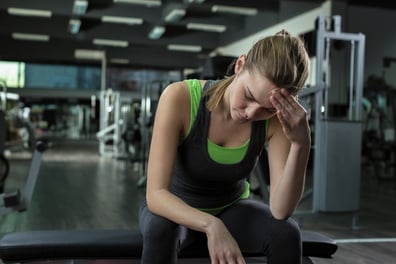 Have you ever woken up feeling like a truck ran you over? This might be due to an underlying illness; whether it be a cold, flu, bronchitis, or some other bug, it seems to happen to everyone at least once per year. When it comes to fitness, we sometimes have to make a choice: “Should I work out or should I rest?” The answer to this is not as cut and dried as it might seem. We’ll look at when it’s a good idea to stay home and chill and when you can just “sweat it out.”
Have you ever woken up feeling like a truck ran you over? This might be due to an underlying illness; whether it be a cold, flu, bronchitis, or some other bug, it seems to happen to everyone at least once per year. When it comes to fitness, we sometimes have to make a choice: “Should I work out or should I rest?” The answer to this is not as cut and dried as it might seem. We’ll look at when it’s a good idea to stay home and chill and when you can just “sweat it out.”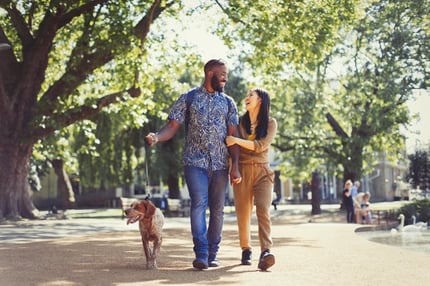 Throughout your life, you will come across times and situations that are tough, making you feel as though getting through it all is inconceivable and hopeless. There are more traditional ways to deal with these ups and downs of life, such as therapy, but there are other ways to overcome stress in life that can be as easy as taking a walk, shooting some basketball, or even lifting weights.
Throughout your life, you will come across times and situations that are tough, making you feel as though getting through it all is inconceivable and hopeless. There are more traditional ways to deal with these ups and downs of life, such as therapy, but there are other ways to overcome stress in life that can be as easy as taking a walk, shooting some basketball, or even lifting weights.